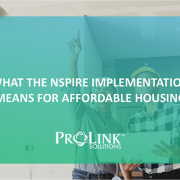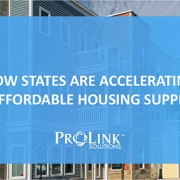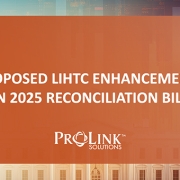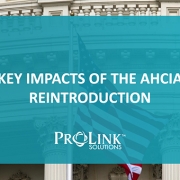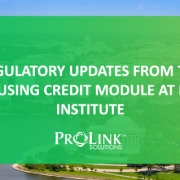ProLink Solutions at NCSHA’s 2025 Annual Conference in New Orleans
Last week, the affordable housing community met in New Orleans for the 2025 NCSHA Annual Conference & Showplace, held October 4–7 at the New Orleans Marriott. This event brought together state Housing Finance Agencies, industry partners, and solution providers to explore emerging challenges, share best practices, and build connections. We were honored to participate as a Platinum Sponsor, and our team was thrilled to both speak and showcase the future of inspection technology.
A Conference of Insight and Momentum
This year’s agenda reflected the full spectrum of challenges and opportunities facing HFAs. The breakout sessions sparked meaningful discussions on how agencies can adapt, innovate, and lead in a rapidly changing environment.
In Navigating Talent Acquisition, speakers addressed workforce challenges such as succession planning, leadership transitions, and employee retention in a competitive labor market. With many seasoned executives nearing retirement, agencies are investing in leadership development and stronger organizational cultures. Topics like DEI, AI adoption, remote work, and relocation barriers underscored the importance of flexibility and adaptability in sustaining long-term success. The HFA Advocacy in Action session demonstrated the power of persistence and collaboration, with CHFA spotlighting its Middle-Income Housing Tax Credit and transit-oriented developments, North Carolina simplifying its funding processes and expanding bond capacity, and Idaho building bipartisan support to pass significant housing legislation.
Equally impactful were discussions on internal innovation and data-driven decision-making. In Best of HFAs: Internal Operations, agencies shared creative ways to strengthen efficiency and engagement. The conference concluded with Leveraging Data to Change the Housing Narrative, highlighting how consistent, high-quality data can influence public understanding and guide better policy. Across every session, one message resonated: the future of affordable housing depends on innovation in people, policy, and data.
Live Demo Highlights
On Monday, our team offered a demo of our newest app, Procorem Inspect, which has been built from the ground up with the NSPIRE inspection standards in mind. Connor McKenna, Director of Product Strategy at ProLink Solutions, presented the live demonstration. Several audience members noted the smooth user experience, flexibility, and precision of the templates.
Beyond the demo, we hosted one-on-one sessions at our booth, answered dozens of questions, and collected invaluable feedback regarding the app. Many participants were particularly interested in how Procorem Inspect could reduce inspection turnaround, improve audit trails, and align workflow with evolving regulatory demands.
Final Thoughts
This year’s NCSHA conference underscored just how dynamic the affordable housing landscape has become with regulatory shifts, new technologies, and evolving workforce intersecting. Events like these are invaluable opportunities to share insights and collaborate on practical solutions to the challenges ahead.
For ProLink Solutions, sponsoring and presenting at NCSHA reaffirmed our commitment to innovation that serves real-world needs. With Procorem Inspect and our broader ProLinkHFA ecosystem, we’re focused on helping agencies strengthen compliance, manage risk, and streamline operations.
To learn more about Procorem Inspect and how it can support your agency’s inspection and compliance goals, please reach out to our team. We look forward to continuing our engagement beyond New Orleans.
We are also doing a session covering Procorem Inspect next week during ProLink Technology Live, our annual user conference. This conference is free and open to all public agencies. Click here to learn more and register.



